There is something mesmerizingly thrilling about exploring Namibia. Wind-swept desert dunes, polished white plains and abundant wildlife create an alluring atmosphere throughout the land. Namibia boasts remarkable natural attractions such as the Namib Desert, the Skeleton Coast and the Fish River Canyon. The wildlife offerings are second to none, and the country holds an average of 300 sunny days per year, making it an ideal destination all year round. Its diverse landscapes offer reliable game viewings regardless of the season and is undoubtedly one of the most exciting and rewarding experiences. The country inhabits more than 20 species of antelope, along with the famous Big 5 and many other magnificent creatures - some found nowhere else in the world. The country is often referred to as "one big desert" and described as a place where nature governs the land. With Namibia being one of the least populated nation on earth, it really is one of the best spots to spend a social distancing holiday.
Known for its rust-red sand, grassy plains, and terracotta-painted landscapes, the Kalahari Desert situated on Namibia's east border is a place that holds the heart of the African continent in its hands. Scattered herds of antelope, zebra and the aloof leopard exist among the Camelthorn Trees of this barren homeland. The Kalahari is a destination that provides an insight into wildlife and culture unmatched anywhere else on Earth. From the pink and red seamlessly cloudy waves in the mornings to the draw dropping golden sunsets in the evening, the true lure lies in the Kalahari's solitude and eerie silence.
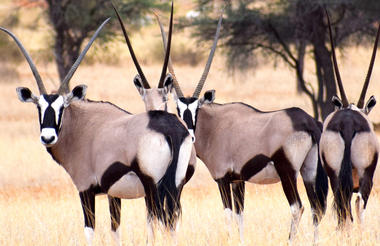
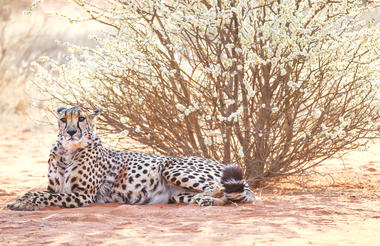

Set amidst the arid terrain near Keetmanshoop are the ancient quiver trees, a striking Southern African phenomenon with twisted branches reaching towards the sky. These tall and photo-friendly trees, reaching up to eight metres, exhibit a unique dichotomous branching pattern, creating a distinctive candelabra-like silhouette. Slow-growing, some specimens in the forest are estimated to be 200-300 years old, thriving in the harsh climate by storing water in their thick trunks and fleshy leaves. Protected as a national monument in Namibia, the Quiver Tree Forest holds both ecological and cultural significance, with its smooth grey bark and fibrous wood once used by the San people for quivers. Nearby, the Giant's Playground, a geological wonder of large dolerite boulders, boasts a unique feature of appearing haphazardly stacked, as if by a giant child. A nearby rest camp provides a comfortable base for travellers keen to experience Namibia's surreal natural landscapes firsthand.



Situated in the heart of Namibia's southern interior, the small town of Aus is an ideal scenic and tranquil base to explore the country. Located east of Keetmanshoop and north of the Orange River, a 2-night stay here will grant enough time to explore the towns of Lüderitz and Kolmanskop. The landscape is characterized by granite mountains, dry riverbeds and arid plains; however, the winter rains make this harsh terrain come to life. The ample hiking and climbing opportunities, along with the famous wild horses that roam free throughout the area, are what really make this town stand out among the rest.

If you only have time to see one thing in Namibia, make it the soaring sand dunes of Sossusvlei. Few words can describe the towering red dunes spread across the landscape or walking amongst the fossilized Acacia trees in the vast white clay pan of Deadvlei. The ever-changing dunes are the arid lands most iconic feature, and hiking to the tops will allow you to view the Martian-like landscape below. Sossusvlei shows off its beauty by housing many plants and animals that have adapted to life in the dry, yet dreamy terrain. This natural wonder is a perfect example of Namibia's unspoiled desert landscape.

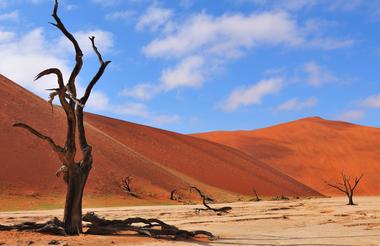
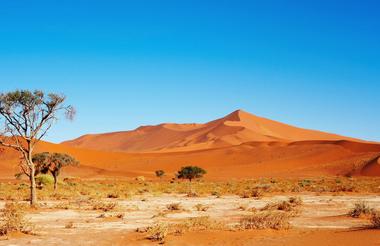
The small scenic town of Walvis Bay is located on the west coast of Namibia. It is the only natural harbour along the country's coastline and is very popular with tourists who wish to explore the area. A short drive takes you to Sandwich Harbour, a freshwater lagoon surrounded by dunes - and famous for its significant fish population. The waters are rich in marine life, housing hundreds of whales and occupying an overwhelming number of seabirds - with countless flamingos, pelicans and seagulls. The natural beauty of the surrounding desert is quite remarkable and a huge factor in the popularity of the bay.



Very few natural landscapes match up to the spectacular views of Spitzkoppe. The peaks stand out dramatically against the flat, desolate scenery below, making it one of Namibia's must-see attractions. Here, the famous Rock Arch can be found - a photographer's dream. Climbing the Spitzkoppe is no easy task. However, if conquered, the views from above are unlike any other! Spend sunrise and sunset sitting tranquilly in nature's beauty, watching the rocks' colours change from bright reds to light yellows, granting endless opportunities to relish in the contrasting light and shadowy patterns of the cliffs.
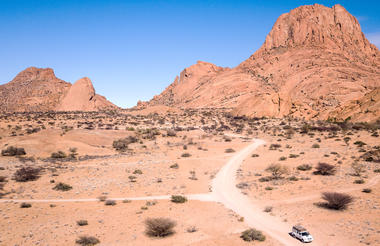
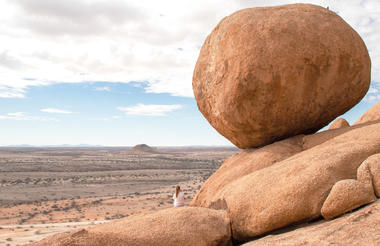
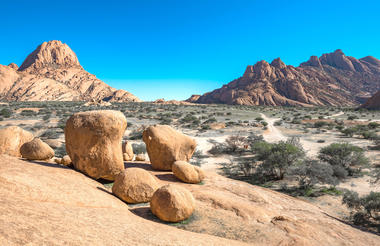
Located between the mountains just south of Etosha National Park, Ongava Private Game Reserve is widely regarded as the finest private reserve in the area. Although it used to be barren farmland, it has been rehabilitated into a haven homing large concentrations of wildlife. This reserve is globally recognised for its conservation, groundbreaking research and exciting safari adventures. The main highlight at Ongava is its large population of rhinos, which are considered to be very relaxed around people, allowing for thrilling close encounters. Here, the atmosphere makes for a truly unique and tranquil experience.
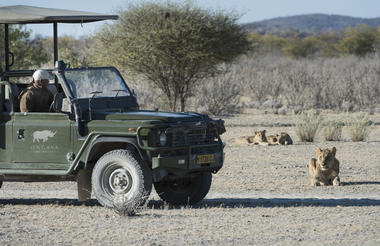
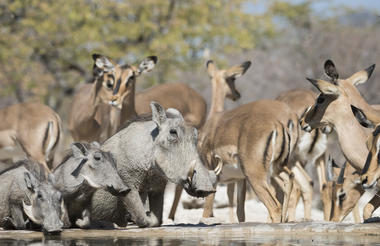
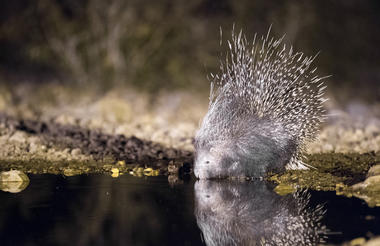
Situated on the eastern side of Etosha, bordering Fisher's Pan, Onguma Game Reserve is one of In the eastern parts of the Etosha National Park, bordering Fishers Pan lies the Onguma Private Game Reserve. Protecting more than 34,000 acres of land, this private reserve is home to over thirty species of animals, from kudu, giraffe and oryx, to predators such as lion, cheetah and leopard. The Onguma water hole is also a great place to spot game. Game drives, guided walks, and rhino research drives can be enjoyed within the reserved area, and safaris into Etosha National Park are available to see the abundance of animals. Here you will have the opportunity of experiencing Africa in all her beauty and diversity.



With a backdrop of rolling hills and grassy plains – Okonjima Nature Reserve is best known for its diverse animal species - such as cheetahs, lions, hyenas and leopards. Boasting mixed woodland and thornveld plains, the land is home to Africa's most extensive wild cat population. Established in 1991, the AfriCat Foundation is a non-profit organisation committed to the long-term conservation and education of Namibia's large carnivores - and even allows you to track the cheetah on foot! Okonjima, with its rugged bushveld and mountainous outcrops, is a truly unique Southern Africa experience.




